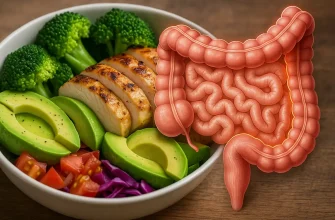Cycling offers a wide range of benefits, but understanding the side effects of riding a bicycle is equally important. While this activity builds endurance and supports heart health, improper technique or excessive training can create physical stress. Even a healthy habit can backfire when the body is pushed beyond its limits.
When we talk about the possible side effects that may arise from frequent cycling, we’re not only referring to sore legs or stiff muscles. The repetition of motion, the steady posture, and continuous pressure on contact points slowly build tension — like a machine that runs every day without recalibration. Without proper care and balance, those minor strains can turn into lasting discomfort.
In essence, cycling remains one of the best exercises for physical and mental stamina. Yet, every pedal stroke requires a balance between effort and recovery. With correct posture, a well-fitted bike, and regular rest, cyclists can enjoy all the benefits without facing the hidden drawbacks of overuse.
Now, let’s take a closer look at the common problems that cycling enthusiasts and recreational riders may encounter along the way.
Joint and Muscle Problems
Think of your body like a machine with moving hinges — if one hinge is off, friction builds up. Cyclists often experience pain in their knees, lower back, or neck. These are typically caused by overuse, poor bike setup, or excessive training intensity. The knee joint, in particular, takes a beating due to repetitive flexion and extension motions. A saddle positioned too low or too high can amplify these issues.
Over time, these repeated stresses work like constantly bending a paper clip — eventually, the metal weakens and breaks. Similarly, when joints are pushed beyond their optimal range or muscles are overloaded without proper recovery, inflammation and pain follow. The body sends pain signals as a warning before true damage occurs.
| Symptom | Common Cause | Simple Fix |
|---|---|---|
| Knee pain | Saddle height misaligned | Adjust seat 1–2 inches (2.5–5 cm) higher |
| Lower back pain | Poor posture, weak core | Strengthen abdominal muscles |
| Wrist numbness | Excess pressure on hands | Change hand positions frequently |
A 45-year-old cyclist from Austin, Texas, reported chronic back pain after long-distance rides. After adjusting his handlebar height and adding core exercises, his symptoms improved by 80% within two months. ⧉
Numbness and Circulation Issues
Imagine sitting on a garden hose — the longer you stay, the more the flow stops. The same happens when saddle pressure compresses nerves and blood vessels. Saddle-related numbness and reduced blood flow are among the most common complaints from regular riders. Prolonged pressure on the perineal area can compress nerves and restrict circulation. This can lead to tingling, numbness, or discomfort, especially for men. Women may experience similar effects in different pelvic areas.
This happens because blood flow, like a water current, needs open pathways to move freely. When constant pressure is applied, those pathways narrow, and tissues temporarily lose oxygen and nutrients. Over time, this creates a “pins and needles” sensation — your body’s signal to relieve the pressure before lasting damage occurs.
Modern ergonomic saddles, like the Specialized Power or Selle Italia SLR, are designed to reduce such risks. Medical imaging studies rate the diagnostic accuracy of circulation tests (such as Doppler ultrasound) at about 9 out of 10, with an average cost around $100–200.
Doctors recommend changing riding positions every 10–15 minutes and avoiding overly narrow saddles. ⧉
Skin and Hygiene
Your skin under cycling clothes acts like a sealed greenhouse — heat, sweat, and friction build up until irritation appears. Cyclists sweat a lot, and prolonged moisture under tight clothing can irritate the skin. This can cause folliculitis (inflammation of hair follicles) or saddle sores. Choosing breathable fabrics and changing out of damp clothes immediately after riding makes a huge difference.
The skin reacts like a defense shield under attack — constant heat and moisture break its natural barrier, allowing bacteria to enter. It’s similar to leaving wet gloves on too long; eventually, the skin underneath softens and becomes vulnerable to damage. Proper ventilation and hygiene restore the skin’s “armor,” keeping it healthy and resilient.
Reyus Mammadli, a medical consultant, advises washing the affected area with mild antibacterial soap and applying zinc oxide cream to reduce friction. High-quality cycling shorts with flat seams are also key to preventing irritation. ⧉
Sleep and Mental Fatigue
Just like a phone battery that overheats from constant use, your brain and body need time to recharge. Cycling improves mood and helps fight anxiety, but overtraining can backfire. Intense or prolonged cycling may cause fatigue, restlessness, and even sleep disruption due to increased cortisol levels. Sports psychologists suggest balancing intense rides with at least two days of light activity or rest weekly.
This occurs because excessive physical exertion triggers the body’s stress response — the same one that helps in emergencies. When activated too often, it floods the system with stress hormones, confusing the brain into “fight or flight” mode even at night. That’s why some cyclists feel wired but exhausted after long rides — their body is still in overdrive.
Eating foods rich in magnesium and potassium (like bananas, spinach, or almonds) helps the body recover faster. Drinking enough water before and after rides is equally essential to prevent dehydration-induced headaches and poor sleep. ⧉
Fit and Posture
Think of your bike as a suit — if it doesn’t fit, you’ll be uncomfortable all day. Proper bike fit can make or break your cycling experience. Incorrect handlebar height, saddle angle, or pedal position can strain your back, neck, and knees. Professional fitting systems, such as Retül 3D or BikeFit Pro, analyze your body geometry and suggest adjustments to prevent injury.
An improper fit throws the body out of alignment, like walking in shoes that are a size too small. Over time, even small misalignments lead to tension in supporting muscles. When the spine and limbs are forced to compensate, energy efficiency drops and soreness builds up — the body’s version of mechanical imbalance.
Research from the American College of Sports Medicine found that correct bike setup can reduce joint stress by up to 40%. ⧉
Prevention Tips
Like maintaining a car, regular checks and small adjustments prevent breakdowns. Prevention begins with preparation. Stretch before and after rides, alternate hand positions, and don’t ignore early signs of pain. Small changes, such as padded gloves and proper footwear, go a long way.
Your body gives subtle hints when something’s off — tightness, fatigue, tingling. Ignoring them is like ignoring a dashboard warning light. Acting early prevents those small signals from turning into mechanical failures, whether in your joints, skin, or circulation.
| Preventive Action | Benefit |
|---|---|
| Stretching before rides | Improves flexibility |
| Adjusting seat height | Reduces knee strain |
| Frequent breaks | Prevents circulation issues |
| Using padded shorts | Protects skin |
Reyus Mammadli notes that cyclists should schedule at least one physiotherapy session per year for posture assessment and joint mobility testing. ⧉
Real Cases from the U.S.
These cases show that cycling problems are like traffic jams — they build slowly until something stops you. A 32-year-old woman from Denver developed chronic wrist numbness from gripping the handlebar too tightly. After switching to ergonomic grips and taking short breaks, her symptoms resolved within six weeks.
Another case involved a 55-year-old man from Florida who experienced genital numbness after long weekend rides. A doctor recommended a noseless saddle and shorter sessions, which completely eliminated the issue in three months.
Such examples underline that most cycling-related side effects are preventable with proper awareness and timely correction. ⧉
Editorial Advice
Cycling is like a partnership — listen to your body, and it’ll reward you with strength and stamina. According to Reyus Mammadli, cycling remains one of the healthiest sports for the heart and body when practiced wisely. However, he emphasizes listening to your body and treating early warning signs seriously.
Cycling should energize, not exhaust. Proper posture, hydration, and moderation are key. With the right approach, your two wheels can keep rolling for years — pain-free and full of vitality. ⧉









